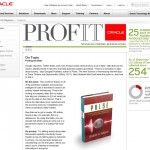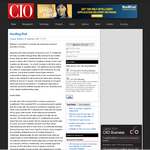Feeling the Beat
Oracle, PROFIT, 2012
“Google searches, Twitter feeds, and even Amazon sales ranks produce a lot of data—data that can be used to identify trends in real time and help business leaders get ahead. ‘There’s a revolution in data about society,’ says Douglas Hubbard, author of Pulse: The New Science of Harnessing Internet Buzz to Track Threats and Opportunities (Wiley, 2011). Here Hubbard tells Profit what the pulse is—and how to find it.” [view article]





